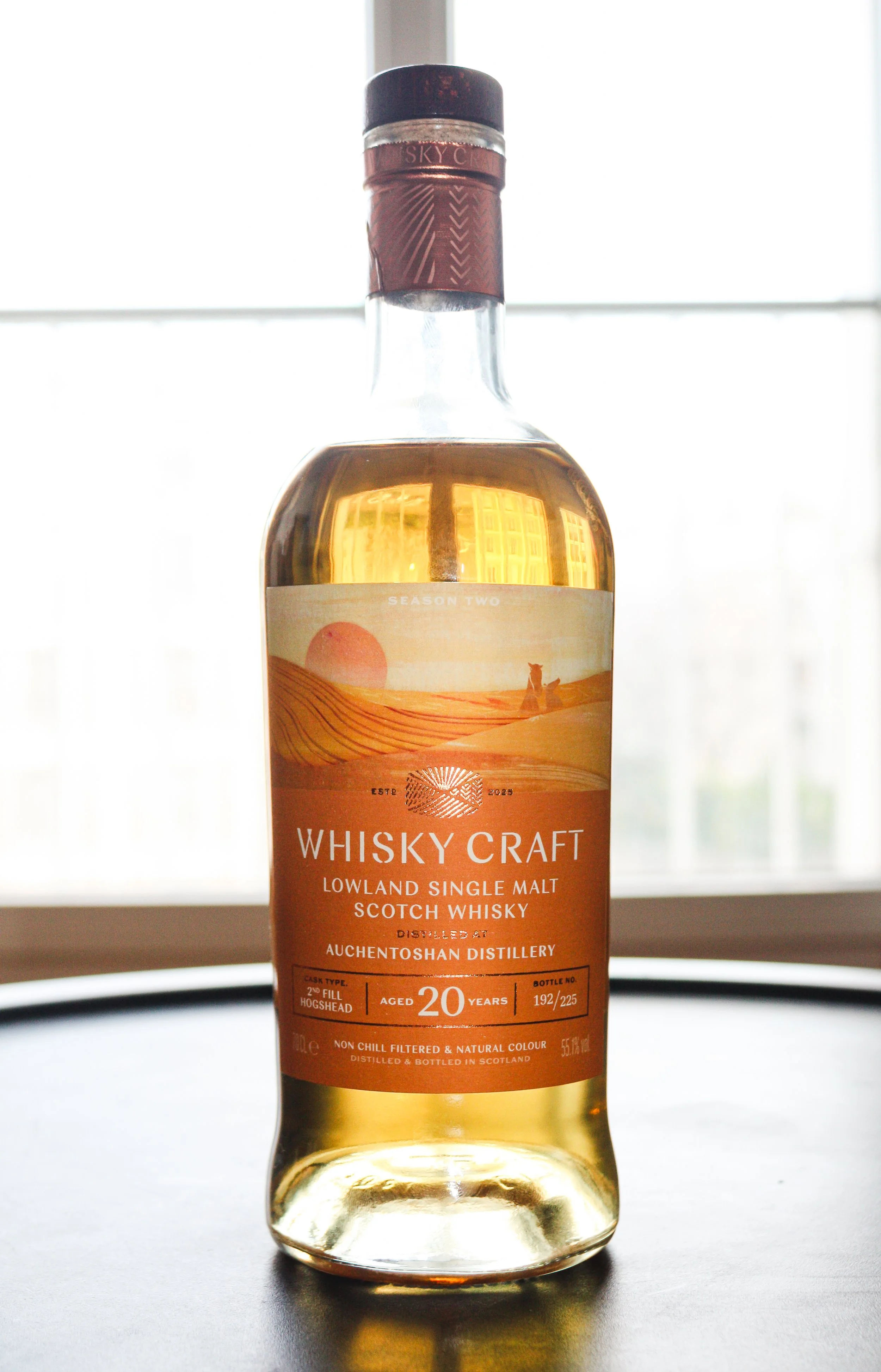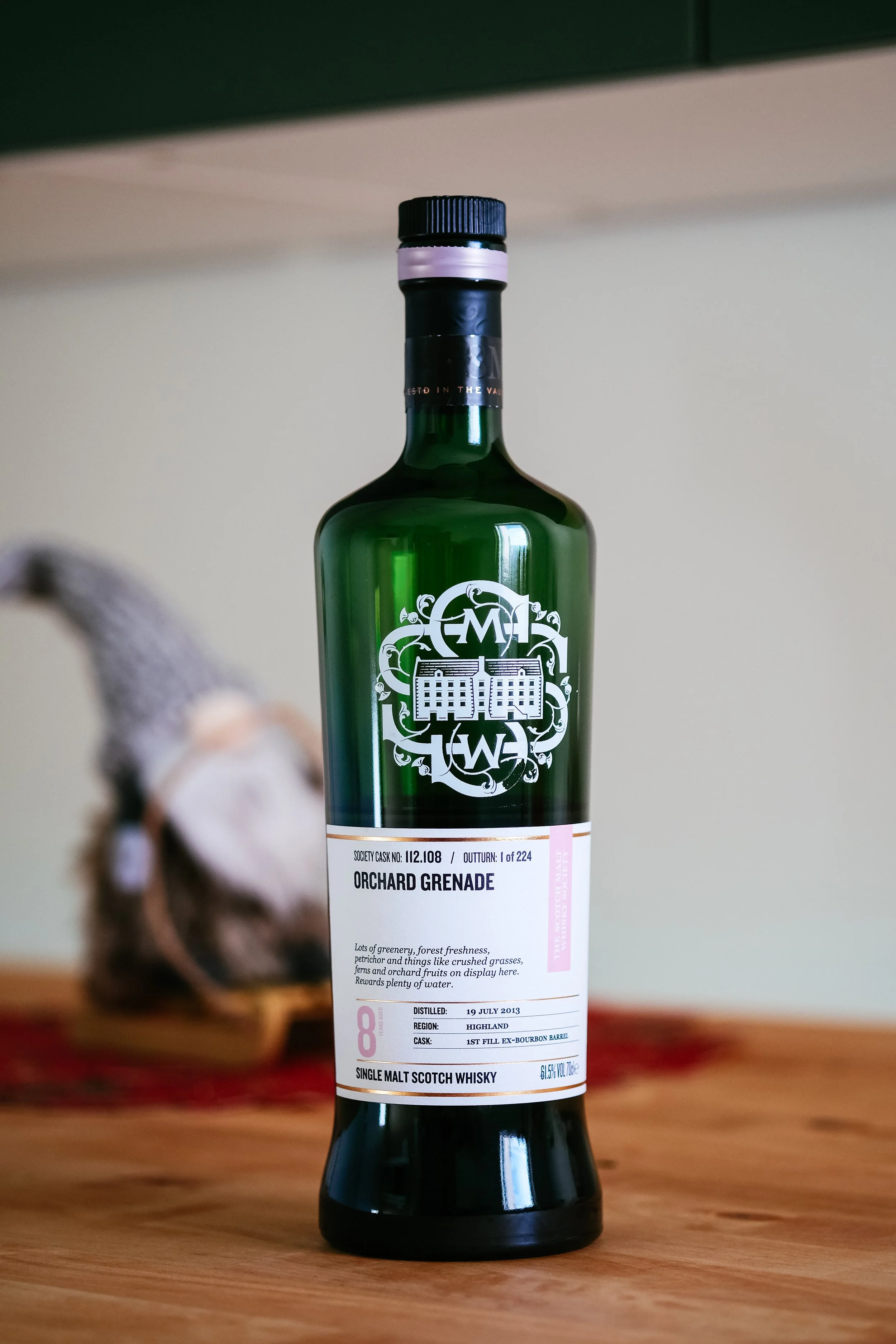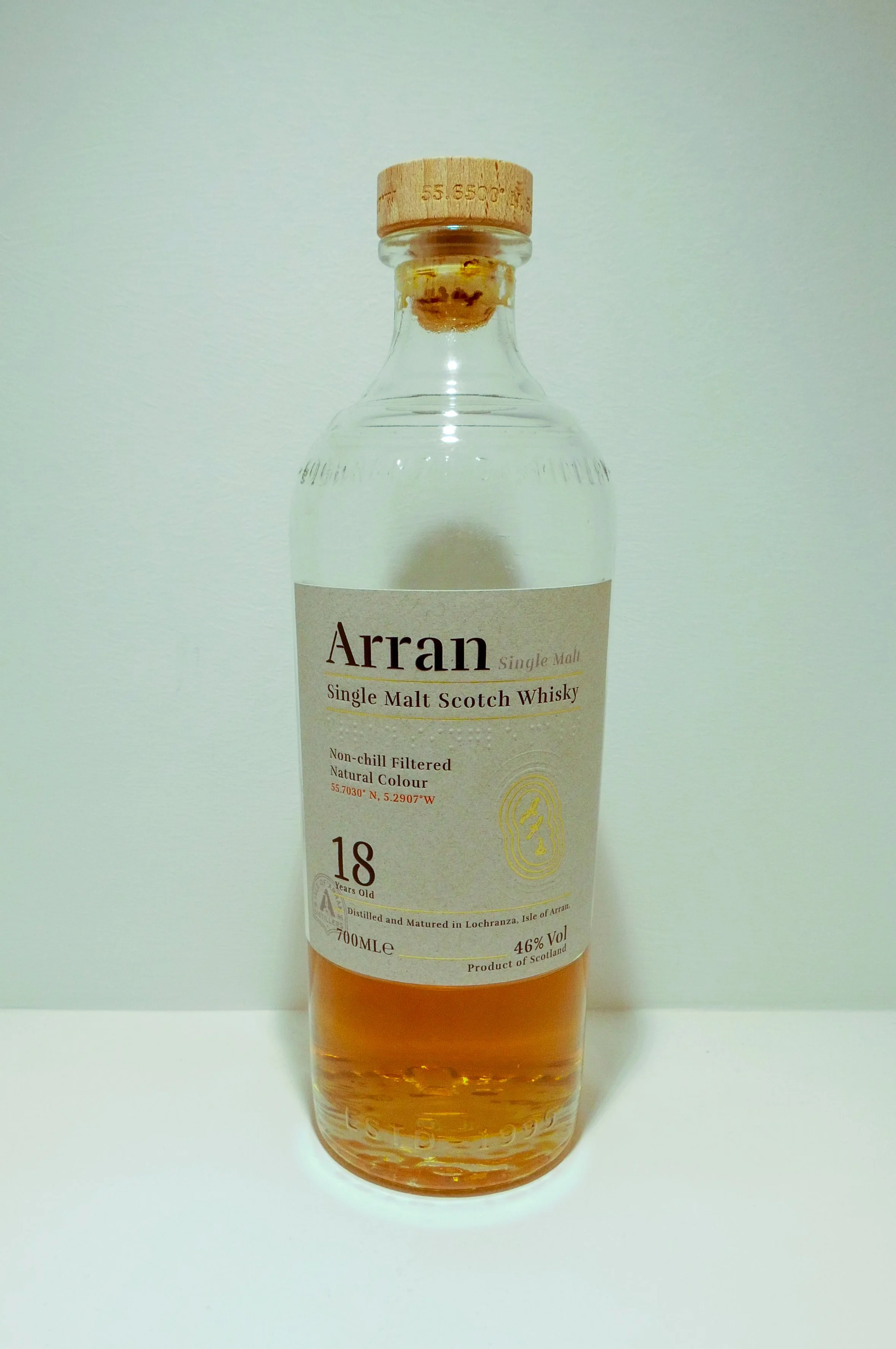Bowmore 17yo SMWS 3.336
Sublime Maritime | 57.4% ABV
Score: 8/10
Something special.
TL;DR
Fruity, peaty and pricey
When Do We Call Time?
I’m going to do my best to keep this rant somewhat contained; a lot of whisky is unjustifiably expensive these days. I know, this is just reiterating a sentiment that’s already been well worn in the enthusiast whisky community. Still, I think it bears repeating, and examples should be called out where possible.
Yes, this is a whinge piece, and anyone that skips straight to the review section is 100% justified in doing so.
I’ve already written a review for a bottling very similar to this one (see my SMWS Fruity Time Travel). By and large, my sentiments are much the same; these bottlings are expensive, but not significantly more so than the majority of other bottlers putting together similar spec Bowmores.
In fact, part of the decision to review this now is the release of more recent Bowmores from SMWS in the last few months. This link is to a Bowmore 18YO with the exact same distillation date (16/02/2004) as the 17YO reviewed in this article, now asking $500 AUD, approx. £265 equivalent, as compared to this bottle’s $330 (£170) price tag purchased only a year earlier. That is to say, there’s a very good chance that these are sister casks, purchased by SMWS at the same time a number of years ago.
I won’t beat around the bush too much here; the pricing is extortionate, and the price jump only punctuates this. At time of writing, there are still more than twenty bottles available for purchase, where previous bottlings in days now past, especially celebratory or anniversary bottlings, probably would have sold out on day of release. This must surely be feedback to SMWS that the pricing has made for a significant disconnect with most of their members.
Obviously not all of the SMWS bottlings are commanding the same premium; like all bottlers, there are some releases which are better value than others, and even the view of value in the first place is fairly subjective. That said, based on a casual scroll through their current Australian stock list, here are a few other bottlings from this October’s outturn which I find to be pretty unfairly premiumised; keep in mind, the conversion factor is $1 AUD = £0.52 at time of writing.
A Blair Athol 13yo for $275 AUD (£143)
A Tamdhu 7yo for $200AUD (£104)
The malt of the month, a Caol Ila 10yo ‘Reduced” from $255 AUD to $220 AUD. (£114)
Whilst pretty deplorable, one can understand the rationale behind trying to premiumise a Bowmore; it is arguably one of the greatest Scotch distilleries of all time, even if their OBs have fallen from grace with most enthusiasts. If anything, that fall from grace has arguably catalysed the premiumisation of IBs.
To somewhat rebuke my own criticism, SMWS have clearly adjusted their pricing in accordance with the increase in market prices for the distillery across the board, which is to say that the wholesale pricing for casks of Bowmore assuredly also deserves my ire. My main issue though is the fact that their cost hasn’t changed, but they’re happy to maximise their profits anyway, and to be so obvious in doing so. But seriously, Blair Athol and Tamdhu? Don’t get me wrong, these are both distilleries making some very nice whisky, but have they ever held anything like the cult status, in OBs or independents, of a distillery like Bowmore?
Some would say that it’s fair play; Business 101 would indicate that a company can ask whatever price they expect to be able to sell a product at, and that market forces will determine whether that price is reasonable or not depending on supply and demand. I get it- capitalism in full force. But I would borrow a view from Roy/Aqvavitae; asking what the market will stand rather than what a product is worth, intrinsically, based on the quality of the product and effort required to produce it, is stealing from whisky’s future.
It turns folks that could elsewise be impassioned advocates and lifelong customers into disengaged, unenthused people that feel left in the cold. I would go further and say that this abject capitalistic approach fails to account for an important human motivator. Spite.
The disengagement that so many companies now cause leads to embittered opponents writing silly blog posts like this one (and other rants I’ve made in the past). Still, hopefully these posts strike a chord in others that have felt similar pangs of disbelief. Enthusiasts that have felt the cold shoulder from greed-ridden organisations with a clear message; ‘If you choose not to afford these bottles, we don’t care about you’. And it is a “choose not”, not a “cannot”, in most instances.
Whisky is a luxury, something that we do not need to live, and should only ever come from some aspect of one’s disposable income. But for many of us, it is a passion, a love affair and, in some cases, a professional endeavour. That we want to engage with this category of product so deeply should be a source of gratitude for the companies that produce it. There are relatively few products in the world that have so little practical utility, yet inspire such ardent devotion.
So to have producers make such blatant statements that unless we are prepared to sacrifice much more of our cash, when we are already so prone to hand it over along with our time, energy and affections, in an economy which already opposes spending as wages stagnate… it just adds such insult to injury.
Though it’s also a well worn topic, look at Diageo, and their ever-forward march to dissuade educated enthusiasts from engaging with their products. Their treatment of Lagavulin, Talisker, Mortlach, and other famous distillates has already turned so many of us away, and their annual Special Releases series continues to exemplify that indifferent corporate attitude.
Well, I say that it is only natural that we be spiteful.
Indignant, offended, affronted, enraged, whatever adjective you want to use, all of it. And I think more of us should be. Some would say that it achieves nothing, that these companies will continue to make profits regardless of their behaviour because there are those with pockets deep enough, heads empty enough, and egos large enough that premiumised products will always continue to sell.
Apropos of nothing, Macallan still seems to be doing very well, no?
Well I think that permissiveness is rubbish. I would rather say something in spite, attempt to affect some change, no matter how miniscule, than say nothing and be silently permissive of the status quo by default. I would rather share my spite in the hopes that it proliferates, that others are swayed and that we might send a collective message to these companies. It might not mean a thing to many of them now, but the spiteful and spurned have long memories.
There may well come a time, after the next bust, the next whisky loch, the next fickle change in drinks fashion (say if the Asian markets do not open significantly or continue to expand, as many are betting their distilleries on) where many producers in the whisky industry will once again rely on the impassioned enthusiasts to buy their bottles and keep their lights on. It is then, when those unfettered profits have sunk below the past’s cold, distant horizon, that we ought remember, and that we ought not forgive.
Review
SMWS Bowmore 17, “Sublime Maritime”, 3.336, 57.4% ABV
$330
Right, enough grumbling. So why buy this moderately premiumised bottle in the first place? Well, as with so many things, it was initially bought with the intention of sharing through my whisky club to spread the cost out. When I cracked the seal for a sniff though, I was struck by the dreadful thought that I might enjoy it too much to want to put the bottle through the club.
What’s more, I had a special occasion looming that called for a quality whisky, and I had some inkling that this bottle might tick all the right boxes. After pouring out a half nip for evaluation, it became pretty clear that I would retain the bottle for personal use, despite the hefty price tag.
It’s not something I can afford to do very often these days, but such is my love of this juice. Seeing how the newer releases have skyrocketed, I’m now somewhat glad that I held on to it…
Score: 8/10
Something special.
TL;DR
Fruity, peaty and pricey
Nose
Maritime indeed; coastal peat with potting mix (sans ammonia, dominantly geosmin) including a pleasing organosulfur/thiol thread, plus tidal rock pools, smouldering beach fires and crustaceans. Possibly less explicit phenols than the Fruity Time Travel (FTT), but the peat is still eminent. There are evident estery fruits at play too, especially mango and lychee, lighter peach and perhaps some grapefruit juice too, though they’re also slightly less prominent than in the FTT. The oak presence is near identical; it’s there, but subtle and tributary rather than obvious or obstructive. Dilution (about 5% ABV) promotes some other heterocyclic notes with touches of herbal terpenes and a subtle naphthalic undercurrent.
Palate
There’s the peat! More expressive phenolics than the nose, especially some creosote and soot reinforced with moderate medicinal cresols. The maritime tones are still present, particularly crustaceans, possibly indicating some bromophenols too. The esters are also more pronounced, dominantly tropical still, intertwined as they are with those pleasing thiols, though they also fuse with the terpenic aspects now for a sense of bright citruses geared toward lemon and lime, meanwhile a little of the malt comes shining through. Oak is again restrained; mild vanilla and coconut, little more. Water lifts the esters further and brings back a little of the potting mix and naphthalenes, inducing something of an organoleptically complexing fustiness. Very nice indeed.
The Dregs
Whilst this is globally very similar to the FTT, which is no surprise given that release was also made of whisky from the same distillation date, I do have a very slight preference for the FTT. The blending of casks in that release seemed to have promoted the estery aspects somewhat, and the balance with the peat was impeccable. That said, this release is close to a bee’s phallus in profile; I’m not convinced I would be able to separate them in a triangle test ten out of ten times. As a result, the score remains exactly the same. Outstanding whisky which I will be all the more sad to finish, given the cost and circumstances of replacement.
Score: 8/10
Tried this? Share your thoughts in the comments below. TK
-
Dramface is free.
Its fierce independence and community-focused content is funded by that same community. We don’t do ads, sponsorships or paid-for content. If you like what we do you can support us by becoming a Dramface member for the price of a magazine.
However, if you’ve found a particular article valuable, you also have the option to make a direct donation to the writer, here: buy me a dram - you’d make their day. Thank you.
For more on Dramface and our funding read our about page here.


































